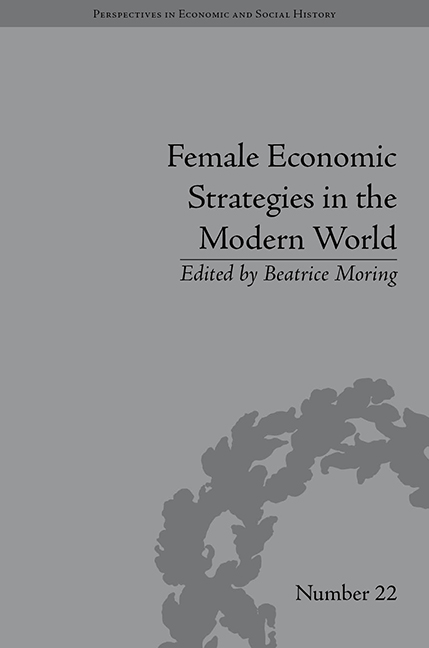Book contents
- Frontmatter
- Contents
- List of Contributors
- List of Tables
- Introduction
- 1 Widows, Family and Poor Relief in England from the Sixteenth to the Twentieth Century
- 2 Survival Strategies of Poor Women in Two Localities in Guipuzcoa (Northern Spain) in the Nineteenth and Twentieth Centuries
- 3 Women, Work and Survival Strategies in Urban Northern Europe before the First World War
- 4 Women, Households and Independence under the Old English Poor Laws
- 5 The Economic Strategies of Widows in Switzerland from the mid-Nineteenth to the mid-Twentieth Century
- 6 Mexico: Women and Poverty (1994–2004): Progresa-Oportunidades Conditional Cash Transfer Programme
- 7 Gender and Migration in the Pyrenees in the Nineteenth Century: Gender-Differentiated Patterns and Destinies
- 8 Women and Property in Eighteenth-Century Austria: Separate Property, Usufruct and Ownership in Different Family Configurations
- Notes
- Index
8 - Women and Property in Eighteenth-Century Austria: Separate Property, Usufruct and Ownership in Different Family Configurations
- Frontmatter
- Contents
- List of Contributors
- List of Tables
- Introduction
- 1 Widows, Family and Poor Relief in England from the Sixteenth to the Twentieth Century
- 2 Survival Strategies of Poor Women in Two Localities in Guipuzcoa (Northern Spain) in the Nineteenth and Twentieth Centuries
- 3 Women, Work and Survival Strategies in Urban Northern Europe before the First World War
- 4 Women, Households and Independence under the Old English Poor Laws
- 5 The Economic Strategies of Widows in Switzerland from the mid-Nineteenth to the mid-Twentieth Century
- 6 Mexico: Women and Poverty (1994–2004): Progresa-Oportunidades Conditional Cash Transfer Programme
- 7 Gender and Migration in the Pyrenees in the Nineteenth Century: Gender-Differentiated Patterns and Destinies
- 8 Women and Property in Eighteenth-Century Austria: Separate Property, Usufruct and Ownership in Different Family Configurations
- Notes
- Index
Summary
When Peter Ochswieser died in 1797, he left behind a widow, Margareth Kühe-bacherin. The couple had no children. In their marriage contract of 1784, they had agreed that if the marriage produced no off spring, the spouse who survived would have a lifelong right of usufruct to the other's assets. The right of usufruct meant that the widow, although not enjoying the status of owner, would be able to manage her deceased husband's property and use its profit for herself. She was not allowed to sell, mortgage or bequeath the house, but for her lifetime she could head the household and make all the decisions that arose in everyday life.
Within a regime of separate property, usufruct was an important balancing mechanism. When one of the spouses died, the wealth brought into the marriage by bride and bridegroom could otherwise be broken up into its original components. This was also true in the area studied in this paper, at least in terms of the formal legal situation. Certain women – women who held property as daughter-heirs, well-off widows or women who had themselves bought a house or a share in a house – remained in a comparatively secure position, but they were far fewer in number than women who had married into the property of their husband.
- Type
- Chapter
- Information
- Female Economic Strategies in the Modern World , pp. 145 - 160Publisher: Pickering & ChattoFirst published in: 2014



